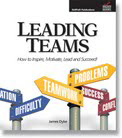Which one of these are YOU? How you answer the question depends on how you are using or understanding these terms. Each of these three designations can describe…
- A role you fill in the organization where you work
- A position of responsibility you hold at a certain level in that organization
- A stage in your personal and professional development
In this issue, we’ll start by exploring these as ROLES. [My thanks to author Charlotte Beers, who introduced these descriptions in a thoughtful article posted on the internet on December 11, 2012.] ONE IMPORTANT POINT: I am addressing these roles in a very basic way, with broad brush strokes. The reality is that the lines between these roles are very blurry—each role benefits from elements of the other! But I’ll save more details for THAT discussion until the final installment of this series.
So… here are the roles…
DOERS are task-oriented and results-driven. Their comfort zone is control and protocol. Give them a clear objective to achieve; the authority to act; a well-defined process to follow; and clear-cut guidelines to define their work; and they are off and running—usually with consistent and predictable success. They are the producers—the ones who perform the tangible tasks of production, construction, manufacturing, or day-to-day processing.
MANAGERS are responsible for the environment in which work takes place. They are custodians of structure, organization, protocol, and productivity. They organize the work and see that it gets done—by others (DOERS). They are masters of the status quo—making sure that the current structure of their area is working well and running smoothly. Their major concern is in the present, to solve any problems that are obstructing effectiveness and efficiency—including any problems with employee performance. John D. Rockefeller III wrote about the culture of large organizations, and the conservatism that dominates their existence. In The Second American Revolution, he wrote…
“An organization is a system, with a logic of its own, and all the weight of tradition and inertia. The deck is stacked in favor of the tried and proven way of doing things and against the taking of risks and striking out in new directions.”
Managers are the caretakers of this organizational system, keeping it running and performing. Ironically, this caretaking ensures that the organization will also be resistant to innovation and change—the very things that prevent organizations from becoming obsolete!
LEADERS are required to think and live in the future. They are expected to anticipate where the organization and its people must travel in order to remain relevant in a changing world. They are the very ones that are required to do what Rockefeller described as “taking risks and striking out in new directions.” The risks that organizations must take are the risks associated with the innovation and change needed in order to survive (and thrive) in the midst of a changing cultural and economic reality. They are sellers of vision and change, so they must capture the hearts and imaginations of their people in order to lead them forward. In reality, they actually play an important role in shaping the future, not just adjusting to it!
Each role requires a specific set of skills.
DOERS coordinate their time, tasks, and processes. They are expected to conform—to values, behaviors, protocols, priorities, and expectations. On the surface this is fairly straightforward. They focus on the concrete, measurable tasks of the organization—executing, performing, and delivering results efficiently and cost-effectively. The skill that is required in their role is primarily a technical skill—welding, contracting, writing, carpentry, assembly, book-keeping, computer programming—whatever is required by the work they are tasked to do.
MANAGERS act in a more relational environment. They must hire, set priorities, motivate others to do the work, and supervise performance. They are required to act in a broader context—collaborating across organizational boundaries and divisions—running interference for their teams; solving problems; and gaining the cooperation of colleagues and higher-ups. I tell managers,
“When you become a manager, you are now in the people business.”
Managers must divide their time between the processes they oversee and the people performing those processes. Both are important to the success of their area of responsibility.
LEADERS must divide their time between the status quo and the future. They choose managers and set appropriate standards and expectations. Their role requires them to understand the work, the business, their industry, and also the changing world outside of the organization. This expanded view is necessary in order for them to innovate and persuade and influence others to accommodate change and follow them into the future.
Another important part of a leader’s focus is on the future of their people—the professional (and personal) growth, development, and career advancement of employees. This is about the needs of the organization in the area of leadership succession—and how to fill the need for future leaders as the organization grows and expands.
Here is the takeaway for all of us—it behooves us to be very aware of which of these roles we are assuming in our work, and to effectively exercise the skills necessary for that role. The difficulty is that we are all challenged and pushed into any of these roles at various times—through circumstance; demands of higher-ups; the nature of our business.
In a recent Harvard Business Review article, John O’Leary reflected on a series of interviews he conducted with managers and leaders, focusing on their roles and functions. He concluded,
“…we think of managers having a different focus from leaders. And yet this distinction blurs significantly when we look at the daily activities of…people in charge. The majority of the activities… [are] very similar, or even identical — delegating, learning, motivating, and so on.”
In the next installment, we will tackle more of the implications of these roles, and explore the blurred lines between them. Stay tuned for more great insight!
Until next time… Yours for better leaders and better organizations,
Dr. Jim Dyke – “The Boss Doctor” ™ helping you to BE a better boss and to HAVE a better boss!





